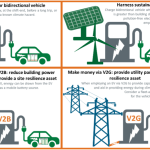Senator Bernie Sanders says that “we are the change we’ve been looking for. “ He stresses the need for a political revolution that will only be achieved through co-creating a culture of civic engagement. But how do we do this? Can “we” do anything collectively that we don’t do individually? Acting alone is where “we” create our shared culture and environmental ecology.
Richard Strozzi Heckler has postulated that the reasons we can pollute our planet is because we are out of touch with our bodies. Being out of touch with our “feeling self,” we can’t empathize with one another, the animal world and other living systems. He describes the mission of somatics as improving our care of one another and the planet by fully appreciating the potential of embodied wisdom.
In my experience as a mediator and a student of somatics, I’ve explored how our feeling side can identify common blocks in verbal conflict and open new avenues to communication and collaboration. By working with simple movement practices from the martialart of Aikido, we can notice predisposed responses to pressure in our own bodies, and discover new options that apply to arguments and disputes as well. It could take years to figure this out by arguing.
When we hear something that we disagree with, we are disposed to reply in kind, with words. Words contain the obvious linear ideas considered logical by our minds, and bingo, we’re off in a war of words. Yet verbal conflicts seldom convey the true nature of the underlying differences. Indeed, we appear to be “pre-disposed” to conflict with one another by the underlying feelings and unmet needs.
Feelings and needs lie deeper in the body than the thinking, speaking mind. They form our moods and attitudes, which set the context for our thinking and speaking verbally. The point is that they live in our bodies, often concealed beneath the literal manner of our mind’s eye. That’s why “body-language” reveals more reliable information than what we say or hear in speech. We actually have three embodied sources of thinking; the head that deals in concepts, the heart (chest) where emotion resides, and the belly, where compassion and intuition fuel intelligence with wisdom.
But our minds prefer to follow the train of thought, especially when we are being pressured. Yet we often speak about conflicts and tensions in terms of bodily feelings. We are aware of someone’s aggressive stance or rigid posture. When pressed, we can feel “pinned down,” “cornered,” or as if our “hands are tied.”
Our bodies immediately respond to pressure with information about our pre-conditioned responses. These responses apply in verbal confrontations as well as physical challenges. Can our bodies also inform us about overcoming habituated responses and finding new avenues to resolution? Verbal pressures come in a myriad of forms, and can trigger even greater varieties of responses. However, the dynamic of our responses to physical pressure are simple and few in number.
Our bodies appear pre-disposed, perhaps culturally, to three common responses to pressures; caving in, becoming rigid, and pushing back. Can you recognize these qualities in common responses to verbal pressures, as well? Ever push back with words? Or give in to an idea that wasn’t yours? Hear responses that won’t budge?
Blending with physical pressures involves three components, which apply in situations of verbal pressures as well. We learn to center and ground our attention, and an open extension from center to meet (or greet) the pressure, where inclusion and relationship can replace a struggle for dominion or control. Centering enhances body-awareness. Grounding deepens breathing and relieves tension and anxiety. It also brings stability and power. Just getting comfortable under pressure enables listening, the first step in compassionate communication, which is a gift to both the source of pressure, and its recipient as well.
Tuning into our own bodies’ messages can transform our habitual responses, enabling us to connect at the level of underlying interests and basic needs. Tune In to the Body is the title of a fun, user-friendly course that teaches access to body wisdom under verbal pressures. It could take years to figure this out by arguing.
- It is inappropriate to pre-think solutions to a real conflict.
- Identifying our predisposition allows alternatives to emerge from the context in a manner more timely and appropriate than predetermined strategies.
- Blending without losing our integrity is an attitude, not a technique.
- Research shows that body language comprises 70%+ of our understanding of one another…. So why do we fight over words?
The elements of blending, which are centering, grounding and extension, can be learned by anyone, regardless of prior training or experience. The response feels empowering and rich with potential for both people. It’s invigorating. It trains our attention upon the integrity that we bring to the encounter, and avoids being distracted by, or reactive to the pressure. It enables us, to harmonize with the pressure, while maintaining our own balance, safety and integrity. This practice informs our minds, eliciting a different train of thought than the habituated responses likely to perpetuate adversity and conflict.
How do we use this in real arguments? If you have a willing partner, you can, in the midst of argument, embody a pressing statement with a physical pressure. You both express how the physical encounter feels. Listen to the body. Wait until the attitude or the posture speaks to the situation. Breathe, ground, center and extend into your connection. This may be a discomforting moment as the mind resists surrendering control. Be patient and thought will return again, but with a different perspective.
When you are rehearsing an argument, notice your body language. One student reported washing an argument into her dishes one night. She stopped, found ground, center and extension. She felt the weight of her own truth and held it in her arms. She resumed doing dishes with different attitude, and had very different thoughts about the argument. Read the whole story.
You can also do this in the midst of an argument by slowing the pace or creating some alone time. Notice your body language. Giving in? Retaliate? Get rigid? Drop your attention into your breath. Feel the weight of your torso balanced upon your core and your pelvis. Drop your weight into the ground beneath your feet and feel how they support you. Listen for a grounded, centered response to pressure bounce back to you from Earths’ core. Put that response into words or actions, or the great gift of Silence, that says, “I am listening.”
You can learn more from TUNING IN to Body. Body-wisdom in Communication and Conflict Resolution at www.CommunicationHarmony.com
Photo by Jan Watson



































